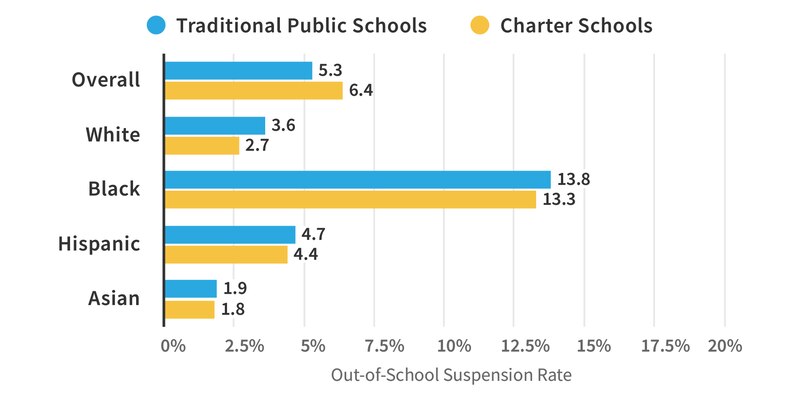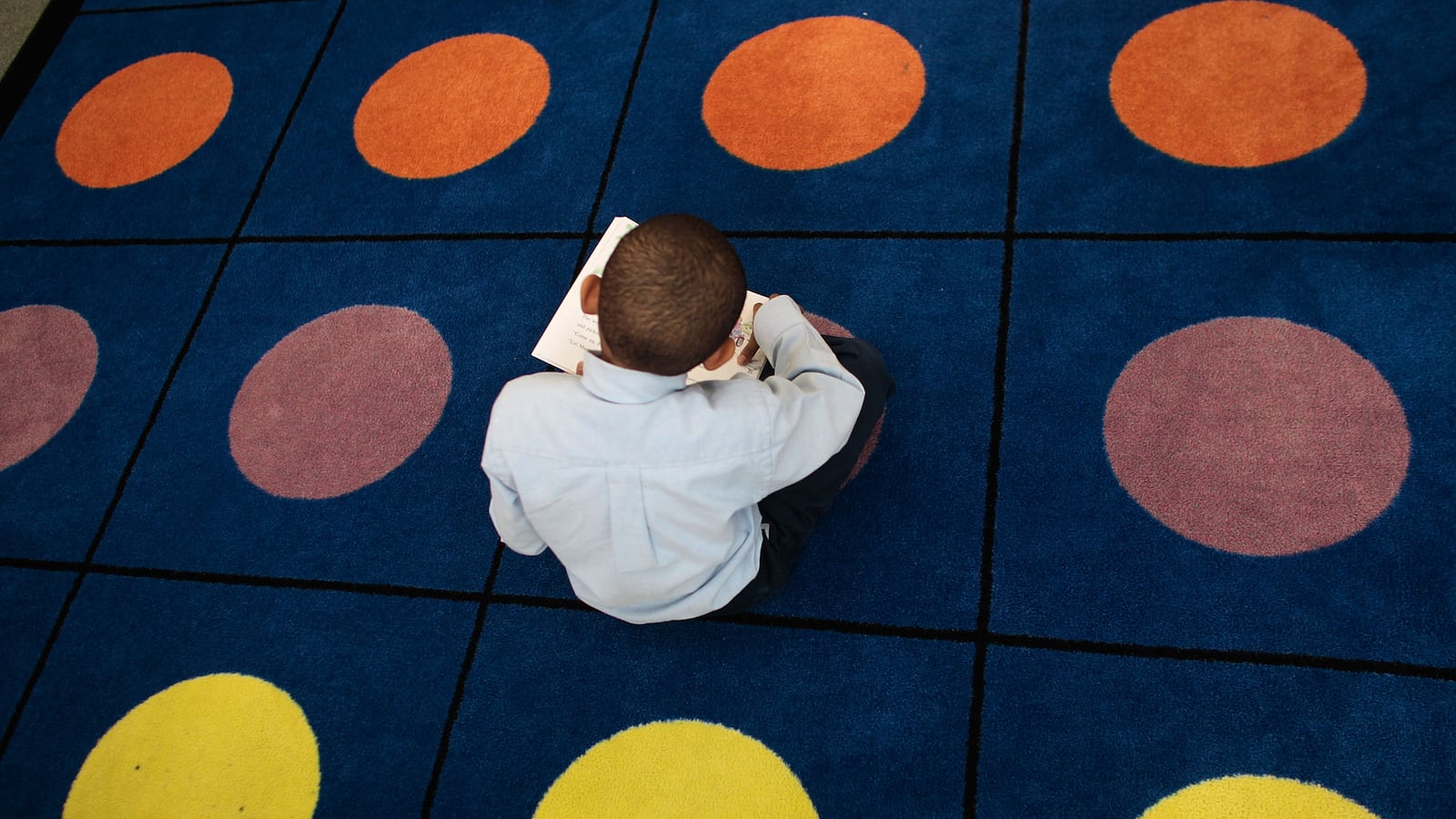A few weeks ago, a government watchdog agency released an extensive report on discipline in U.S. schools. It drew headlines for underscoring how black students, boys, and students with disabilities are much more likely to be suspended.
But there was one question that the report helped answer that didn’t get much attention: are charter schools more or less likely to suspend their students?
It’s a fraught topic, particularly as so-called “no-excuses” charter schools across the country have been criticized for what some see as overly harsh discipline. And the answer turns out to be complicated.
Here’s the latest national snapshot, which comes from 2013-14 data. Overall, charter schools have a somewhat higher out-of-school suspension rate — meaning the percent of students who were suspended at least once — than traditional public schools. But when you break down suspensions by students’ race, charters actually post slightly lower rates in each major group.

How can that be? It happens because charters and traditional public schools don’t have the same share of students in each student group. Charters serve a greater share of black students, for one, and those students are much more likely to be suspended than other groups in both sectors. (Statistics teachers, you can use this as a real-world example of what’s known as Simpson’s paradox.)
These findings highlight how complicated it is to fairly compare suspension rates across schools, and suggest that charter schools may have have similar — even lower — suspension rates than traditional schools, depending on how the data is sliced.
At the same time, some of the most-praised charters, particularly those in the “no-excuses” camp, really have been shown to post high suspension rates, even accounting for differences in student populations.
A 2013 study showed that attending a Boston charter school, often lauded for high test scores, substantially increased the amount of time students were suspended.
And to be clear, the GAO data show that black students at charter schools — and all kinds of schools in the report — still get suspended at a far higher rate than other charter students. Moreover, the report shows that charter schools are more likely to suspend students with disabilities than traditional public schools (12.9 percent vs. 11.6 percent).
Charters reported lower overall rates of in-school suspensions, referrals to law enforcement, expulsions, corporal punishment, and school-related arrests than traditional public schools.
All of this data describes what is happening, but it doesn’t explain why. And the report doesn’t look at other characteristics — like students’ motivation or academic performance — that may be related to their likelihood of being suspended.
Keep in mind that although the data that GAO relies on, the 2013–14 Civil Rights Data Collection out of the U.S. Department of Education, is widely cited, it has important limitations. In particular, some have found evidence in past data collections that schools, including charters, misreported discipline rates.
(The author of the GAO report noted in an email that the department had made efforts to catch data problems by flagging large districts that report zero suspensions. But since charters are usually relatively small, these checks may be less likely to catch errors among charter schools.)
Charter schools are also more likely to deliver instruction entirely through virtual programs, and those cyber charters may be unlikely to suspend students. A more appropriate comparison might be be between brick-and-mortar charters and brick-and-mortar traditional schools, but the data isn’t broken down that way.
This data is notable, in other words, but should be interpreted with caution.


